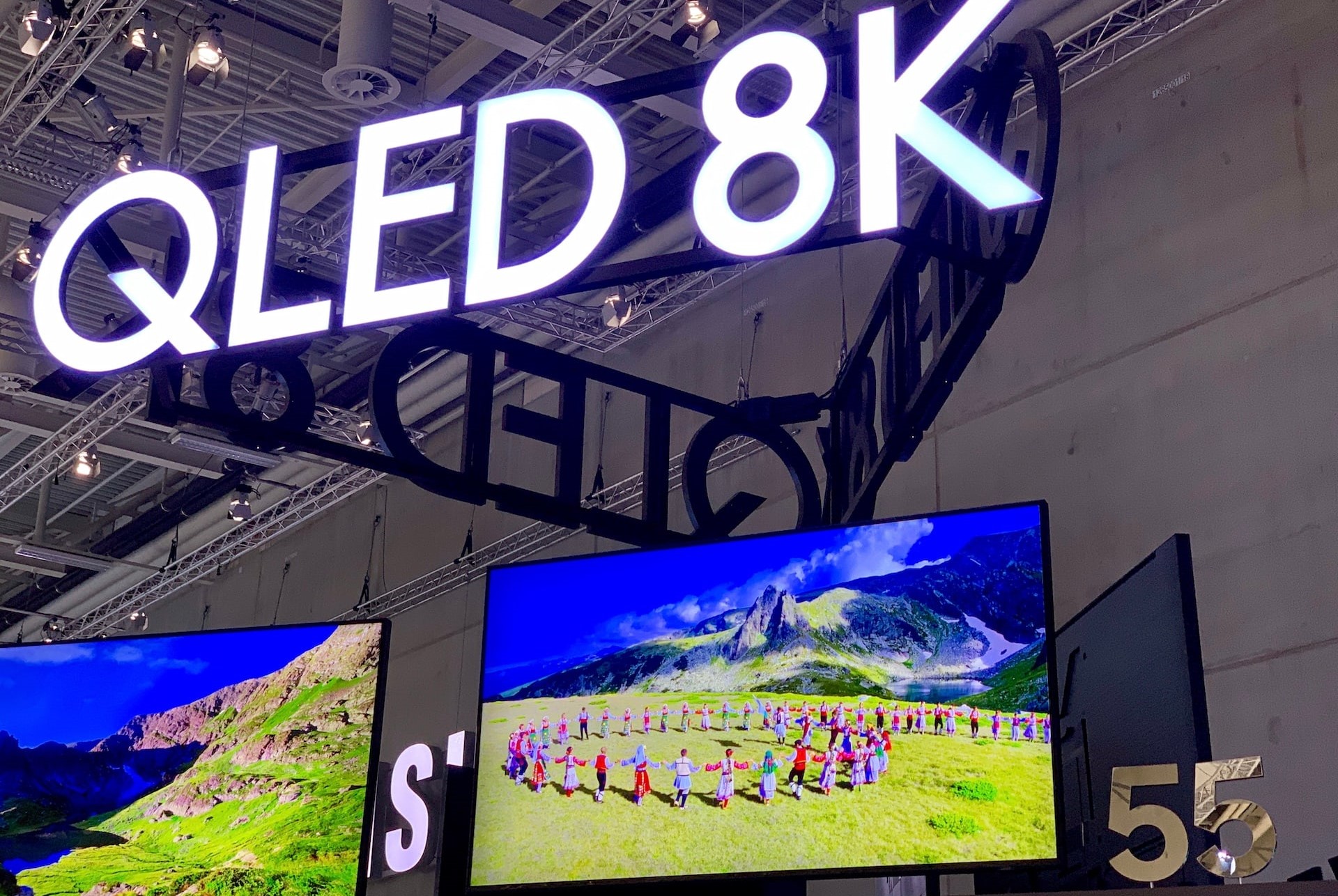Will 8K TV Follow 4K's Quick Adoption Pattern?
Industry observers and executives alike remain stunned at how, in just five relatively short years, 4K UHD TVs transformed from a pricey curiosity to a race-to-the-bottom commodity. Based on this perhaps flawed phenomena, the industry is optimistic that 8K will follow the same super-speedy adoption path, sans 4K's rapid price erosions.

Nearly all TV makers have either announced, exhibited or started to sell one or more 8K models. This week alone first-to-sell-8K Samsung announced a 55-inch QLED version, TCL introduced its "designed to be the smartest TV on the market" 8K QLED X Series, and OLED grand poobah LG debuted its Signature 88-inch OLED priced in the posh $30,000 neighborhood. Sony, Panasonic, Sharp, Hisense, Konka, Grundig, Skyworth, Metz and Grundig all exhibited 8K sets in the last week, most 88 inches, some as large as 120 inches.
Industry analysts aren’t sanguine about 8K's prospects, however. Last December, Strategy Analytics projected that 8K-ready devices would account for just 3% of the TV market by 2023, with global unit sales reaching only 11 million units. This past April, IHS somewhat infamously forecast only 6 million 8K sets would be sold in 2023.
“I think that severely underestimates the market size,” insisted Alfred Chan, VP of marketing at V-Silicon, insisted during a panel discussion with 8K ecosystem executives organized by the 8K Association, inaugurated at the most recent CES. “In 2023, 50% of TVs could be 8K given the rise in sales of larger screens. I think the market is big for 8K.”
“I think the transition will be slower,” countered Pete Sellar, senior director of corporate standards for Xperi. "But in six to seven years, TV makers might not see any point in carrying 4K sets anymore."
8K PAIN POINTS
Everyone agrees on the one major hole in the 4K-8K adoption analogy: content. Netflix and Amazon both launched 4K streaming early during the initial UHD hardware rollout, and UHD Blu-ray players and a smattering of Hollywood titles appeared almost simultaneously with new 4K TVs. However, there is only a smattering of 8K content now leaking into the ecosystem, largely NHK gearing up its 8K engine for the 2020 Tokyo Olympics, and three European OTT providers—CHILI, The Explorers and MEGOGO—announced 8K content availability in the last week.
Without even the promise of widely available 8K content, it's no surprise that consumers ask: "Why do I need 8K?"
To move the 8K needle and prove IHS wrong, on the business side 8K stake holders "have to encourage native 8K production," notes Dan Schinasi, Samsung America's director of product planning. "It helps that the 8K Association is developing industry standards. Our mission is to encourage native 8K production." One help is the increasing development and availability of professional 8K production equipment.
One argument the 8K community can use to convince producers to capture content in native 8K is oversampling. "Capturing content in 8K to deliver in 4K or 2K makes a better presentation," explains Chan. "Capturing in higher resolution for legacy value makes a lot of sense, even if the deliverable is 4K or 2K."
Paralleling 8K professional gear availability is the development of more efficient codecs such as HEVC, AV1, VVC (Versatile Video Coding) and EVC—Essential Video Coding, aka MPEG-5, although many of these are still years away. But with Wi-Fi 6 and even 5G, wireless pipes are getting roomy enough to handle the thicker 8K data stream.
Simultaneously on the consumer front, TV makers advise retailers to de-emphasize resolution as 8K's prima facie case to buy. "There's a lot more to pursue than just resolution," Schinasi points out. "It's a matter of packaging the message."
Instead of simply resolution, 8K's three primary selling points to package are HDR, color gamut and, especially, upscaling.
"Algorithms for upscaling have improved dramatically in the last couple of years," notes Chris Chinnock, 8K Association executive director. "New scaling technologies that use machine learning to analyze millions of images have created databases so you can have intelligent upscaling that resides in the cloud, which means 4K and increasingly 2K content will look very good on an 8K TV."
One hurdle 8K makers know they need to overcome is resistance on the sales floor, which means getting retailers on board. "We're just now starting to reach out to retailers—our first task is to engage with them," Chinnock admits. "We have to conduct market research with retailers to discover pain points, then develop programs to address those pain points."
The major roadblock at retail, beyond consumers not recognizing a need for 8K, is price, especially the value ratio. It's helpful that new large screen 65- and 75-inch 10.5 generation panel capacity will be coming online in the next few years, which will allow prices on 8K sets to drop—hopefully not through the floor as they have for 4K, or at least not as quickly.
"A third of the current 4K market is 55-inches and above," observes Marek Maciejewski, TCL's European product development director. "8K 65-inch sets and above will also start to sell when prices become affordable and there's content."
Finally, 8K Association minimum specifications and certifications on the verge of finalization, along with test specifications and tools that hopefully lead to self-certification, will result in 8K certified sets appearing in 2020 that could help salve consumer worries about what they may be buying.
"All the pieces of the 8K ecosystem are moving in the right direction," Chinnock notes optimistically.
This story originally appeared on TVT's sister publication, TWICE.
Get the TV Tech Newsletter
The professional video industry's #1 source for news, trends and product and tech information. Sign up below.
